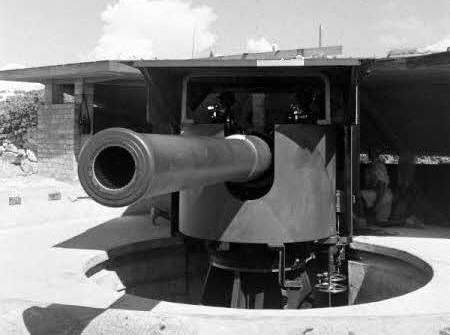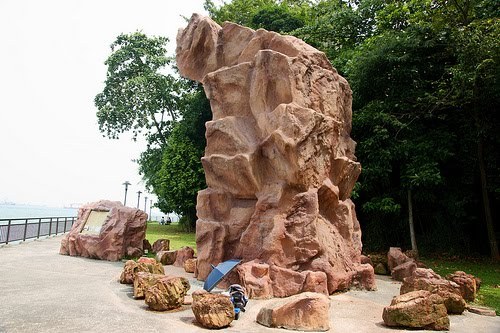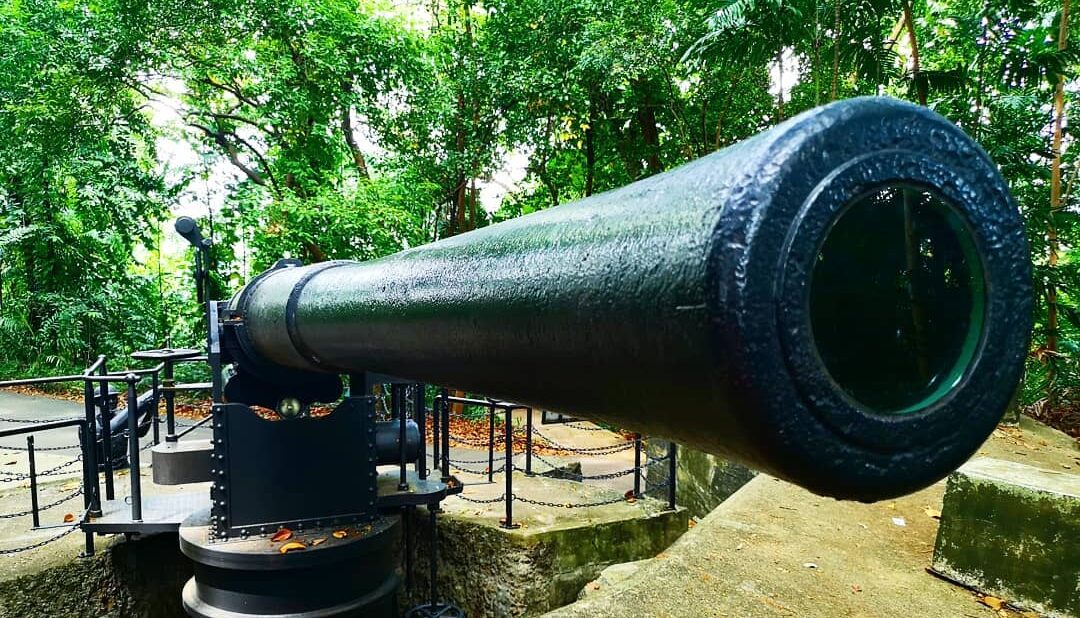Once a coastal artillery fort, it is now a nature reserve and one of few remaining preserved WWII historical sites in Singapore.
Located on the southern tip of mainland Singapore, Labrador Nature Reserve (also known as Labrador Park) was once a heavily fortified gun post built to defend the western entrance of Keppel Harbour.
However, it did little to stop the invasion of the Japanese during WWII and had fallen into demise at the end of the war.
Defending Singapore
The British began fortifying the coast of Labrador in the late 1860s against possible attack from pirates and invaders. Several concrete bunkers, two six-inch batteries and a series of underground tunnels were built for the purpose. Search lights, underwater mines and barbed wires were also set up along the coast to deter any coastal landing.
The coastal fort defending the coast of Labrador became known as Fort Pasir Panjang. It was one of 11 coastal forts set up along the southern coast and undoubtedly the most fortified of all.
With the onset of WWII, two modern six-inch guns (capable of firing 102-pund shells 10 miles away) were added to to the fort; Fort Pasir Panjang was subsequently upgraded to Labrador Battery.
The guns at Labrador were manned by a multi-ethnic unit consisting of a Malay soldiers operating the searchlights, Indian troops manning the guns, and British commanders handing out directives.

Labrador Battery, along with the several forts at Sentosa, were expected to play an instrumental role in defending the southern coast of Singapore.
However, the Imperial Japanese Army had opted to invade Singapore from the Causeway up north.
While most of the guns along the southern coast had traversed 180 degrees to fire rounds against the Japanese, they proved to be ineffective as they were equipped with armour-piercing rounds meant for ships, not high-explosive rounds that would have dealt heavy damage against the Japanese infantry.
You may be interested in: The History Behind Haunted Amber Beacon Tower
Nonetheless, the guns at Labrador aided the Malay Regiment during the Battle of Pasir Panjang.
With the subsequent fall of Singapore on, the guns at Sentosa and Labrador Battery were destroyed to prevent use by the Japanese.
Labrador Battery was abandoned after WWII, only to be restored in the late 1990s as part of conservation efforts by the Singapore government to preserve historical sites in the country.
Nature Park to Nature Reserve
The park was first designated as a nature reserve in 1951. In 1973, for unknown reasons, the site was downgraded to a nature park.
Labrador Park was gazetted once again as a nature reserve in 2002, citing the diverse landscape and habitat that had enabled the local wildlife to thrive in their habitat.
At 10 hectares, it is currently the smallest of the four nature reserve in Singapore. The other three reserves are Sungei Buloh Wetland Reserve (131 hectares), Bukit Timah Nature Reserve (163 hectares), and Central Catchment Nature Reserve (3,043 hectares).
The latest addition to Labrador Nature Reserve is Labrador Nature Coastal Walk, a 2km trail — which consist of Alexandra Garden Trail, Berlayer Creek mangrove trail and Bukit Chermin Broadwalk — that connects directly to Labrador Park MRT. The coast walk allow visitors to get up close to one of two remaining mangroves located in southern Singapore.
Dragon’s Teeth Gate
A famous feature at Labrador Park is the Dragon’s Teeth Gate, or ‘Long Ya Men’ as known in the early days of Singapore.
As the name suggests, the rock formation is shaped like a dragon tooth while the passageway into Keppel Harbour symbolises the mouth of the dragon, hence the name.
First discovered by traveler Wang Dayuan in 1330, the rock served as an important navigational aid for mariners in the 14th and 15th century.

The original rock however, was destroyed by the British in 1848 to widen the channel for larger vessels to enter Keppel Harbour. The Dragon’s Teeth we see today is a 6-metre symbolic replica installed in 2005 to highlight the historical significance of the rock outcrop and celebrate the 600th Anniversary of Admiral Zheng maiden voyage.
You may be interested in: The History Behind Marsiling Tunnels
World War II Relics

Several World War II relics and replicas can be found around Labrador Nature Reserve. This includes a preserved machine gun pillbox located along the edges of the coast an a gun replica which can be found at the top of the hill.
In 2001, several underground tunnels were unearthed. They were believed to be storage space for ammunitions during World War II. All of the tunnels are currently closed to the public and can only be accessed during special tours held by NParks.
A rumour suggest that an underwater tunnel was dug to connect Fort Siloso and Fort Pasir Panjang. However, entrance to the rumoured tunnel was not found, neither were there any historical records to back the claim.




